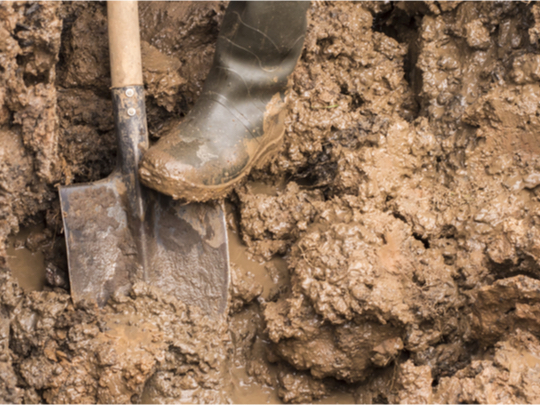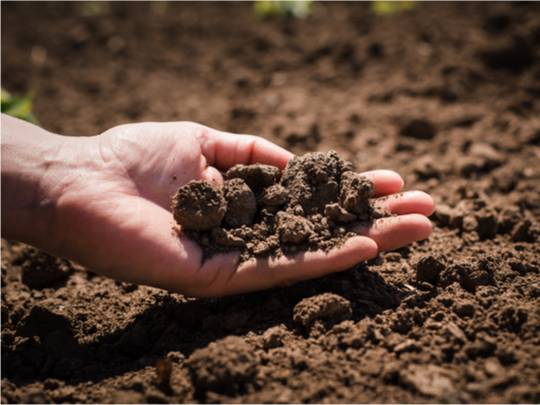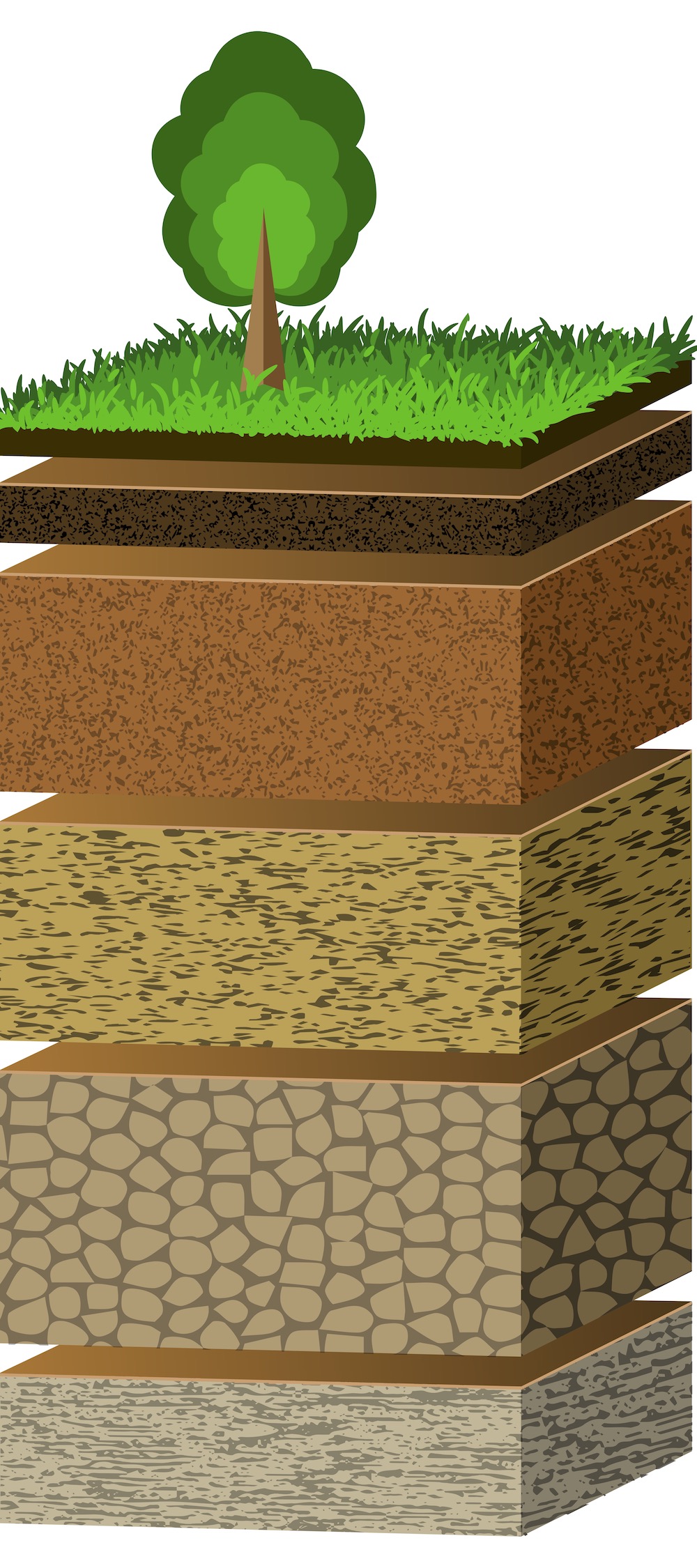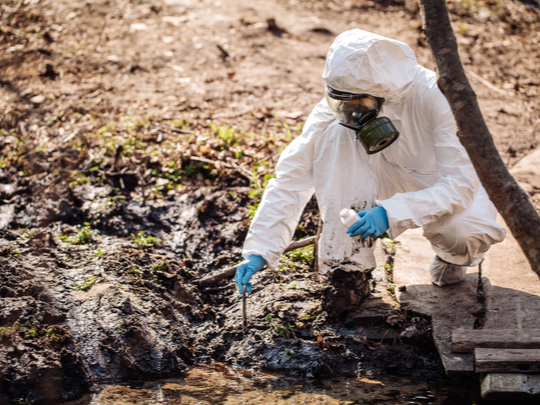Soil Origins
Soil is the top layer of the earth’s surface. It consists of mineral and rock particles, organic matter, water and air. Agriculture could not exist without soil. Soil provides a medium in which crops can be grown, delivering nutrients and water to the crop and also provides physical support for plant roots.
Farmers choose to grow different crops depending on the type of soil they have on their land. Poor yields of crops can result from growing a crop in an unsuitable soil. Farmers also have to consider sustainable methods of farming to ensure the ability to grow crops on an ongoing basis.
Did you know that 4,455,800 hectares are dedicated to agriculture in Ireland (CSO, 2016).
Soil Microorganisms
The soil microbiome is a term used to describe the community of living microorganisms within our soils. These include fungi, bacteria and archaea. Each of these microorganisms have specific functions that keep our soils healthy. These are also called soil ecosystem services. Maintaining a large variety (or diversity) of microorganisms ensures the functioning of our soils. Some of the ecosystem services that the soil microbiome provides include nitrogen fixation and increased nutrient and water absorption.
Plants require nitrogen for photosynthesis but before it can be absorbed, nitrogen fixing bacteria must convert atmospheric nitrogen (N20) into the plant available forms - ammonia (NH3) and nitrate (NO3). Nitrogen fixation microorganisms can be free living in the soil or can be present through symbiotic relationships with certain plants. Azotobacter bacteria are a group of free-living soil microbes that fix nitrogen from the air. Rhizobium are a group of bacteria that form a symbiotic relationship with leguminous plants (eg clover) to form nodules at the roots. Symbiotic relationships are important for the survivability of each of these organisms. The rhizobium bacteria extract food from the plant and the plant extracts nitrogen from the soil after nitrogen fixation.
Another important grouping of microbes include fungi. Mycorrhizal fungi colonise the root system of plants and increase their nutrient and water absorption capabilities. Therefore, fungi play a critical role in food production. The mycelium of the fungi absorbs and retains nutrients and water and due to the symbiotic relationship, these important factors can then be more readily absorbed by plants.
Soil Types
Sand, silt and clay particles all have different properties, e.g. effect on drainage, aeration and fertility. Therefore the proportions of these mineral particles present in the soil will largely influence the water and nutrients available to crops, the aeration of the soil, drainage of the soil and how easy it is to cultivate. The properties of sand, silt and clay in a soil determine the soil texture. An ideal soil for cultivation contains 40% sand, 40% silt and 20% clay. A loam soil contains equal amounts of all three soil particles.
Sandy soils are well drained, well aerated, low fertility, easily tilled, warm up quickly in spring but are prone to drought and do not get waterlogged.


Clay soils have poor drainage, poor aeration, fertile and retain nutrients, they are not suited to tillage due to plasticity, they do not warm up due to lack of aeration and cold soils. They retain water during drought but are prone to waterlogging.
Loam soils have good drainage, good aeration, good fertilityand are easily tilled. They will warm up in spring and will retain water but will not become waterlogged or be prone to drought.
Peat Soils are a huge part of Ireland. They are characterised by their absence of horizons except for the O horizon which is dark brown/black in appearance. Peats are widely used for providing fuel in the form of turf. Peat soils are characterised by their poor drainage and acidic pH.
7.5% of all Irish bogs are owned by Bord na Móna.
3% of all Irish bogs are actively harvested by Bord na Móna.
24% is the percentage of raised bogs owned by Bord na Móna.
Peat operations are in 9 of the 26 counties in the Republic of Ireland.
Solar energy is used to dry the peat down to 45-55% moisture content for harvesting.

Soil Composition

O Horizon
This is not always present, due to the absence of vegetation. It consists of organic material.
A Horizon
This is commonly known as topsoil. It contains minerals and may have organic matter mixed through it. However, it can experience the effects of leaching and so it may be lacking in minerals in certain conditions.
B Horizon
Is known as the subsoil. It is normally a lighter colour than topsoil, except where minerals have been leached and have accumulated in this horizon.
C Horizon
Contains parent material and is rocky in nature.
R Horizon
Is the bedrock and is solid.
Chemical Properties
Soils have essential elements, macronutrients and micronutrients. Plants need these essential elements in order to be able to grow. The most important nutrients are the macronutrients that are found in large quantities such as nitrogen, phosphorus, potassium, calcium, magnesium and sulfur.
Particularly in farming Nitrogen (N), Phosphorus (P) and Potassium (K) play an extremely important role in soil management.
Nitrogen (N) is the most importa of the macronutrients. Without it, plant and animal life would not exist. Nitrogen has many essential functions in both plants and animals such as it is a component of chlorophyll which is needed for photosynthesis, it is a component of amino acids which is needed to create protein. It is also a component of DNA, which is responsible for growth and reproduction in plants. Sufficient levels of nitrogen provides rapid plant growth, creates dark green vegetation and high protein content in seeds.

Phosphorus (P) is the second most important macronutrient. Phosphorus like many mineral elements is found in ionic compounds in the soil. It is soluble in water and it is taken up by plants in this soluble form. Like nitrogen, phosphorus has many essential roles in the plant, it is required for optimum growth and reproduction, involved in energy transfer in the plant, it is important for the production and development of new cells as well as the transfer of DNA to new cells and for seed formation and development. When plants have sufficient phosphorus they are early maturing with vigorous growth, it has increased resistance to plant disease, it improves flower formation and increases stalk/stem strength.
Potassium (K) carries out a number of important functions in the plant such as protein synthesis, translocation of carbohydrates, regulation of plant stomata and water use, promotion of disease resistance and activation of plant enzymes. Sufficient levels of potassium increases crop yield and root growth.